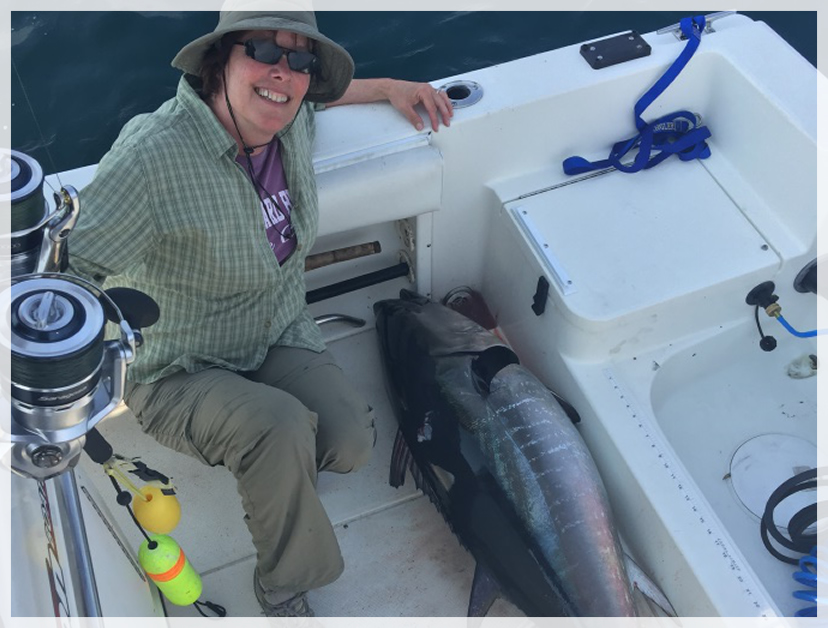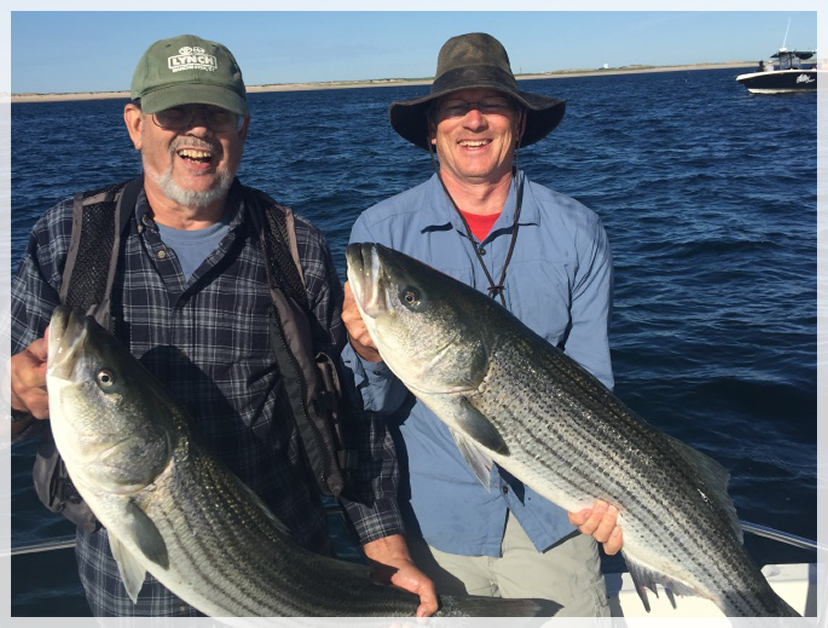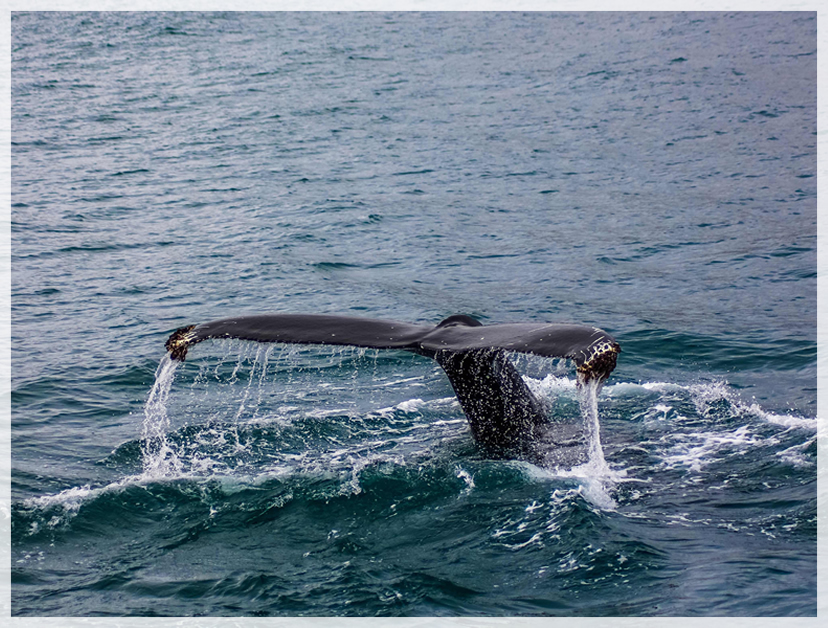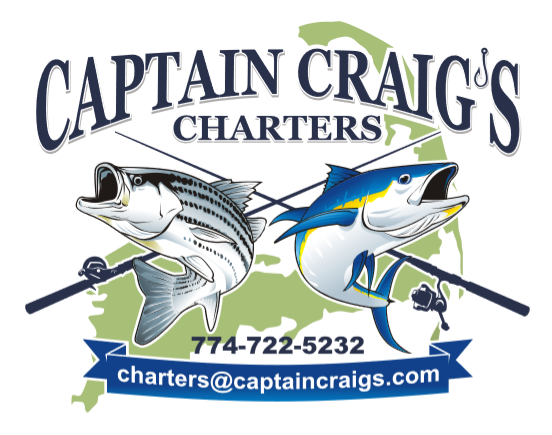Your Trip
What To Bring
- Appropriate clothes for the forecasted weather and bring one extra layer.
- Non-marking soled shoes. Flip flops are not recommended.
- Sunglasses, sunscreen and hat.
- Something to eat and drink.
- Camera.
- Rain coat.
- Cooler with ice to have in your vehicle to bring home fish.
Local Weather
Fish and Whale Information


Bluefin tuna are an amazing fish. Their migration covers thousands of miles each year. They are found here mostly from July through mid-November. These fish can grow to over a thousand pounds and can swim at speeds of over 40 miles per hour. Special fishing gear is needed to have a chance to bring one of these fish on board. There are three size classes; smalls, mediums, and giants. The small and medium fish (less than 73 inches in size) may be caught recreationally. These fish are great tasting and provide top end sashimi (sushi) and beautiful one inch thick tuna steaks. The fish over 73 inches in length must be commercially sold and belong to the Captain of the vessel. Bluefin tuna are the prized catch around Cape Cod. There is nothing like seeing them breaking on the surface; you get a feel for their size and speed. Catching one of these fish will create a lifetime memory.
Whales
Northern Atlantic Right Whales congregate in and around Cape Cod Bay in late winter through mid-spring. They are one of the most endangered whales in the world. Population estimates are around 450. They feed on a macro-plankton bloom that takes place in Cape Cod Bay in the winter and spring months.
Approximately one third of the worlds Northern Atlantic Right Whale population visit the area in April and early May. Usually around the first week in May the Right Whales leave the area to head north for the summer. Some of the most amazing whale watching opportunities occurs in the month of April and early May with the Right whales. Watching these huge mammals skim feed along the surface of the water close by is almost surreal. They also may be seen group feeding, hitting their pectoral fins or tail on the surface of the water, breathing on the surface, preparing to sound where their tails come out of the water, and if you’re very lucky, the occasional full body breach.
Northern Atlantic Right Whales are a species of baleen whale, may reach 65 feet in length and weigh over an astounding 200,000 pounds.
Humpback Whales are seen more frequently in the summer months around Cape Cod. These whales feed on a larger sized food than the Right Whales, which includes krill and small fish. They feed on some of the same food that brings the Striped Bass and Bluefin tuna to the area. Humpback Whales may be seen group feeding (including using a bubble net technique), hitting their pectoral fins and tail on the surface, rolling on the surface when breathing,, preparing to sound where their tails come out of the water, and the occasional full body breach.
Humpback Whales are a species of baleen whale, may reach 52 feet in length and weigh up to 80,000 pounds. They migrate as far as 16,000 miles each year, feeding in the colder waters during the summer months and the warmer tropical waters to breed and give birth.
Minke Whales are seen around Cape Cod for most of the year. These whales are smaller than the Right and Humpback Whales and are usually seen feeding in larger pods. Most of the time you see them coming to the surface to breath while they are actively feeding. They don’t raise their tales out of the water when feeding and very seldom breach. Minke Whales grow up to 35 feet in length and may way up to 20,000 pounds.
Fin Whales are seen frequently around Cape Cod most of the year. I mention these whales, not because they are a fun whale to watch while out on the water because they’re not. They feed shallow in the water column and aren’t seen displaying their tale, pectoral fins, or breaching. I mention them because they are second to the Blue Whale as the largest animal ever to live on earth. This information is to help give you an appreciation of this animal when you see them while out on the water around Cape Cod.








